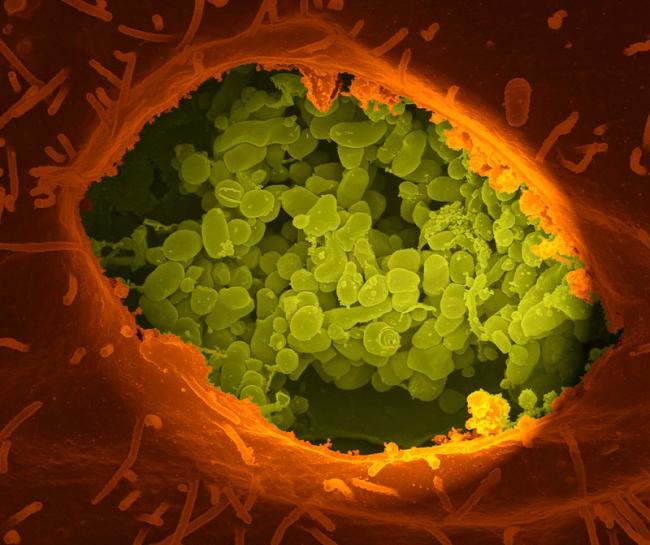Researchers create safer form of Coxiella burnetii for scientific use
Media Advisory Thursday, January 25, 2024
Researchers create safer form of Coxiella burnetii for scientific use

What
Scientists have unexpectedly discovered that the weakened form of the bacteria Coxiella burnetii (C. burnetii) not typically known to cause disease, naturally acquired an ability to do so. C. burnetii causes Q Fever in humans and its weakened forms are those used for scientific purposes. Subsequently, the scientists identified the genetic mutation responsible for the increased ability to cause disease (virulence) and created a form of the bacteria without the genetic flaw that could safely be used for research. The study, by scientists at the National Institute of Allergy and Infectious Diseases (NIAID), part of the National Institutes of Health and collaborators at Washington State University and Northern Arizona University, is published in Nature Communications.
C. burnetti naturally infects livestock, including goats, sheep and cattle. The bacterium causes Q Fever, a rare human disease with fewer than 1,000 cases annually reported in the United States. Individuals at highest risk for C. burnetii infection include farmers, veterinarians and animal researchers as infection is caused by breathing dust contaminated by infected animal products, such as feces, urine, milk, and birth products. Q Fever is characterized by mild-to-severe flu-like symptoms and can be treated with antibiotics. Those who develop severe disease may experience infection of the lungs (pneumonia) or liver (hepatitis). A small percentage of people (fewer than 5 out of 100) who are infected develop a more serious infection called chronic Q fever, which develops months or years following the initial infection. This condition requires months of antibiotic treatment and can result in death.
The varied forms of lipopolysaccharide (LPS)—a large molecule on the outer membrane of Gram-negative bacteria—can profoundly influence a bacterium’s ability to cause disease in humans. Variability in LPS form is known as “phase variation” and is particularly important to C. burnetii as it helps determine the bacteria’s virulence. The NIAID scientists and their collaborators set out to determine exactly how LPS length affects C. burnetii’s ability to cause disease. The form of C. burnetii found in nature (called “wild type”) is highly virulent and is considered a select agent by the U.S. Centers for Disease Control and Prevention (CDC) that requires specific biosafety laboratory capabilities and securities for research. In addition to the fully virulent Nine Mile I strain (NMI), two additional forms of C. burnetii are typically used for research purposes—none as virulent as NMI. These bacterial forms include: NMC, which is moderately virulent, and NMII, which is not considered virulent and features a large chromosomal deletion that irreversibly eliminates two genes involved in LPS biosynthesis. The NMII strain is exempted from CDC select agent regulations because of its inability to cause disease.
To investigate how LPS length influences C. burnetii virulence, the researchers infected guinea pigs with either NMI, NMC or NMII; all experiments were performed in Biosafety Level 3 laboratories. Fourteen days post-inoculation, the scientists unexpectedly found NMII isolates in the spleens of 3 of the 4 guinea pigs infected with that strain, suggesting that the bacteria disseminated in the animals rather than being immediately cleared. Further, the researchers found that the NMII isolates featured an unrecognized form of LPS modification that helped produce elongated LPS and, therefore, become similarly virulent to the NMC strain. To determine if LPS elongation was limited to animal models, the researchers passaged, or grew, NMII in a cellular culture over 50 weeks. Again, the NMII strain demonstrated LPS reactivity that suggested acquired virulence. Based on their analysis, the researchers determined that the NMII bacteria featured a specific genetic mutation that caused LPS elongation and enhanced the strain’s disease-causing potential. To address potential safety concerns, the scientists created an NMII strain, called NMII-E, that deleted the specific gene, and found that this strain did not produce the same LPS effects.
According to the authors, the findings have implications for laboratory work with C. burnetii, diagnostic sensitivity and vaccine development. Specifically, the ability of the NMII strain to naturally revert to a more virulent form suggests that individual researchers who are working with the strain should perform their work in higher biosafety level conditions. Importantly, they note that this work demonstrates the success of the select agent program and advancement of safe alternatives for conducting important scientific research.
Article
CM Long et al. Natural reversion promotes LPS elongation in an attenuated Coxiella burnetii strain. Nature Communications DOI: 10.1038/s41467-023-43972-y.
Who
Carrie M. Long, Ph.D., an Independent Research Scholar in NIAID’s Laboratory of Bacteriology and corresponding author on the paper, is available for comment.
NIAID conducts and supports research—at NIH, throughout the United States, and worldwide—to study the causes of infectious and immune-mediated diseases, and to develop better means of preventing, diagnosing and treating these illnesses. News releases, fact sheets and other NIAID-related materials are available on the NIAID website.
About the National Institutes of Health (NIH): NIH, the nation's medical research agency, includes 27 Institutes and Centers and is a component of the U.S. Department of Health and Human Services. NIH is the primary federal agency conducting and supporting basic, clinical, and translational medical research, and is investigating the causes, treatments, and cures for both common and rare diseases. For more information about NIH and its programs, visit www.nih.gov.
NIH…Turning Discovery Into Health®
Institute/Center
Contact
301-402-1663


